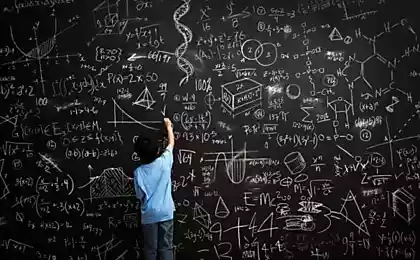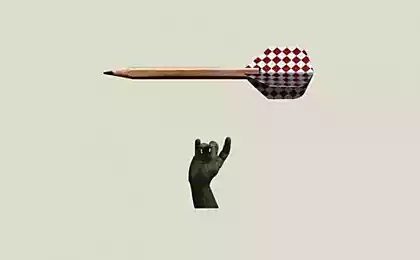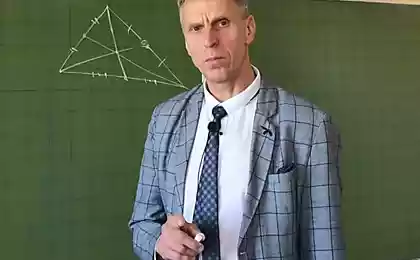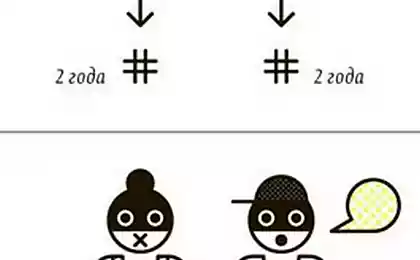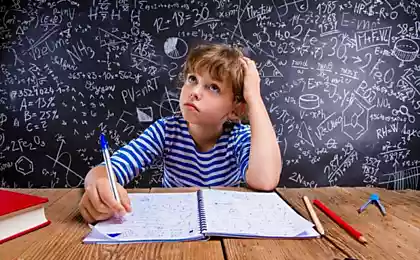205
Examples for children in mathematics that put adults in a stupor
Simple examples for children in mathematics often baffle wise life experience adults. Why is this happening? The fact is that modern technology brings down a sea of content on us. But when there is too much information, there is no time to analyze it.

As a result, even basic abilities for analysis and calculation are lost over time. To counter this, we suggest solving various examples more often and dealing with puzzles. For example, students solve the problem in 1 minute. How long will it take you?
First you need to understand what numbers are hidden behind the images of a bicycle, sofa and house. Only then will the main question be answered.

The first three examples are pretty simple. It seems that any student can easily cope with it (and this may well be true).

But there's a little catch in the latter. And if you act directly and thoughtlessly, then you will not be able to answer correctly. When deciding, remember that it is customary to do multiplication and division first, and only then addition and subtraction.
If multiplying three bikes gives us 8, then behind one two-wheeled vehicle lies the number 2. In the second example, we need to solve a small equation. If you give it a more mathematical appearance, then 2 + 7 = x - 1.

Transfer the unit to the left with a plus sign and get = 2 + 7 + 1 = 10. As you can see, the house replaces the number 10. Therefore, the product of a sofa and a bicycle is ten. Knowing what a bicycle equals, we find a numerical equivalent for a sofa of 10/2 = 5.

In the last example, you will have to recall one of those rules that the teacher of mathematics often repeated. Namely: first perform division and multiplication, and then addition and subtraction. If you replace the chair with the letter "y", the example takes the following form: y + 5 * 2 - 10 = 8.

Recalling the instructions of a favorite teacher, we begin with multiplication: y + 10 - 10 = 8. It's simple. Ten with plus and minus are equal to zero. From here y = 8. To sum up: a bicycle is two, a sofa is five, a house is ten, and a chair is eight.
Perhaps someone presented the task will seem too simple. We would like to include even our youngest readers. After all, it is useful for children to understand that they are able to cope with many tasks completely independently.

As a result, even basic abilities for analysis and calculation are lost over time. To counter this, we suggest solving various examples more often and dealing with puzzles. For example, students solve the problem in 1 minute. How long will it take you?
First you need to understand what numbers are hidden behind the images of a bicycle, sofa and house. Only then will the main question be answered.

The first three examples are pretty simple. It seems that any student can easily cope with it (and this may well be true).

But there's a little catch in the latter. And if you act directly and thoughtlessly, then you will not be able to answer correctly. When deciding, remember that it is customary to do multiplication and division first, and only then addition and subtraction.
If multiplying three bikes gives us 8, then behind one two-wheeled vehicle lies the number 2. In the second example, we need to solve a small equation. If you give it a more mathematical appearance, then 2 + 7 = x - 1.

Transfer the unit to the left with a plus sign and get = 2 + 7 + 1 = 10. As you can see, the house replaces the number 10. Therefore, the product of a sofa and a bicycle is ten. Knowing what a bicycle equals, we find a numerical equivalent for a sofa of 10/2 = 5.

In the last example, you will have to recall one of those rules that the teacher of mathematics often repeated. Namely: first perform division and multiplication, and then addition and subtraction. If you replace the chair with the letter "y", the example takes the following form: y + 5 * 2 - 10 = 8.

Recalling the instructions of a favorite teacher, we begin with multiplication: y + 10 - 10 = 8. It's simple. Ten with plus and minus are equal to zero. From here y = 8. To sum up: a bicycle is two, a sofa is five, a house is ten, and a chair is eight.
Perhaps someone presented the task will seem too simple. We would like to include even our youngest readers. After all, it is useful for children to understand that they are able to cope with many tasks completely independently.
Why pensioners should stay busy for the maximum number of years
Dad made homemade sausage every year and rolled it into jars, sharing an old proven recipe

